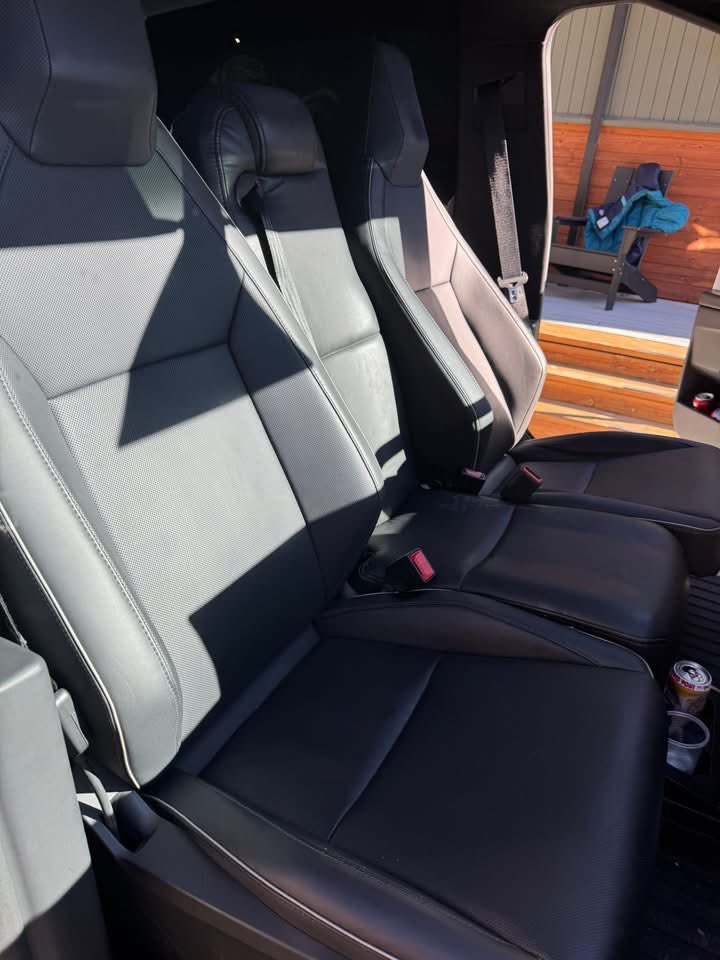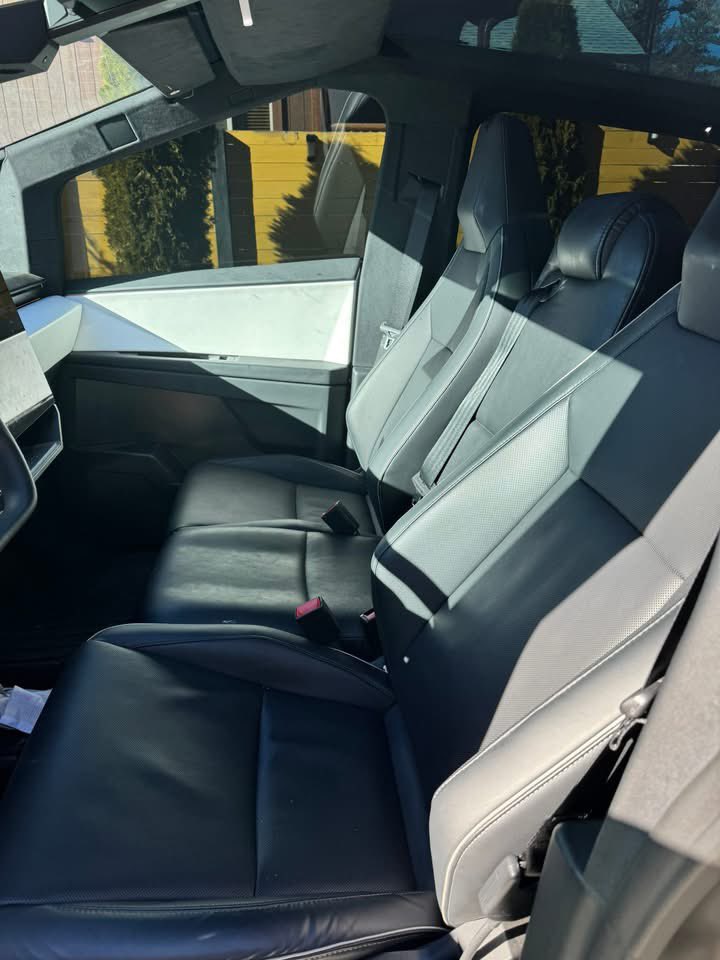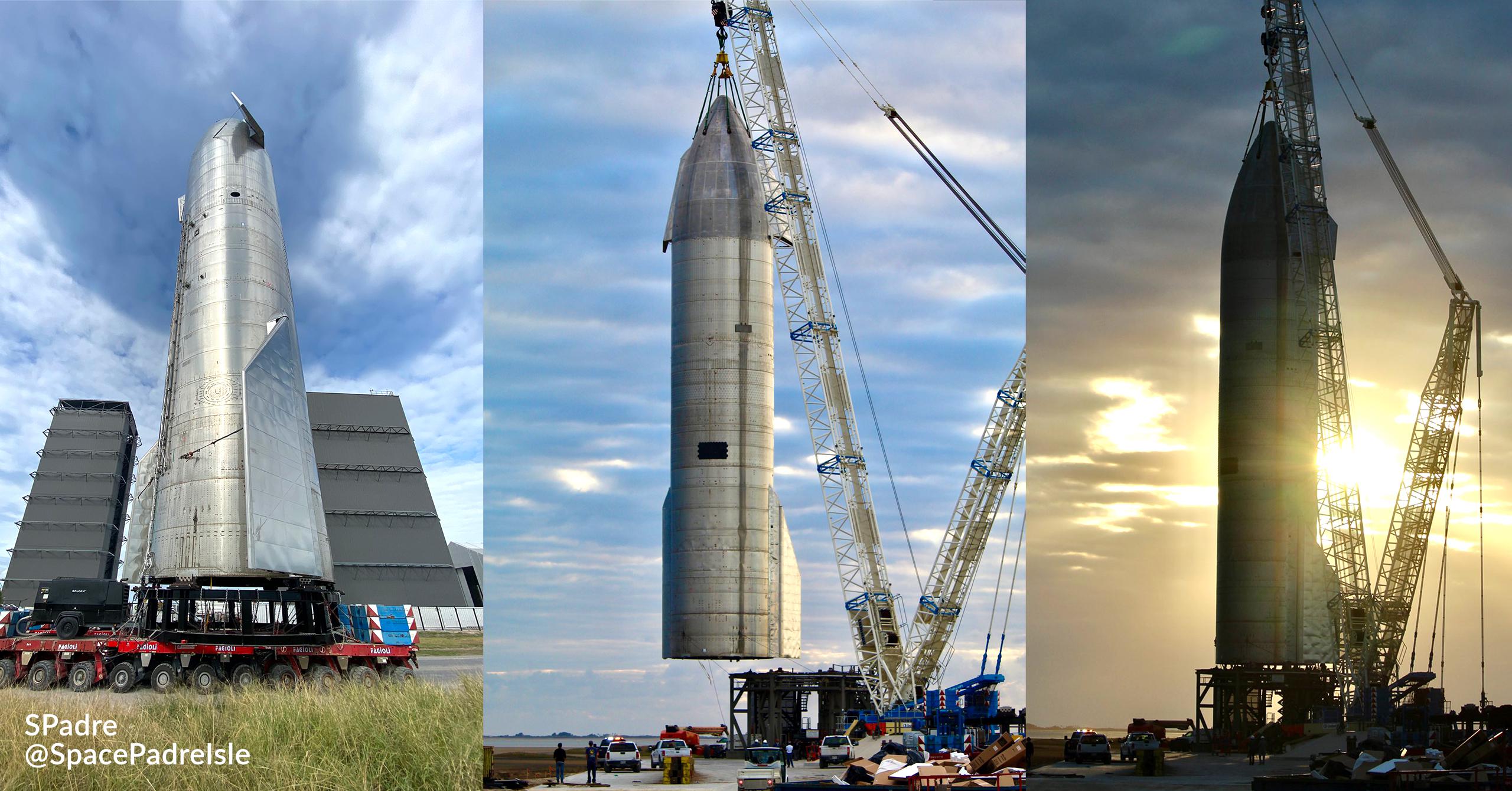
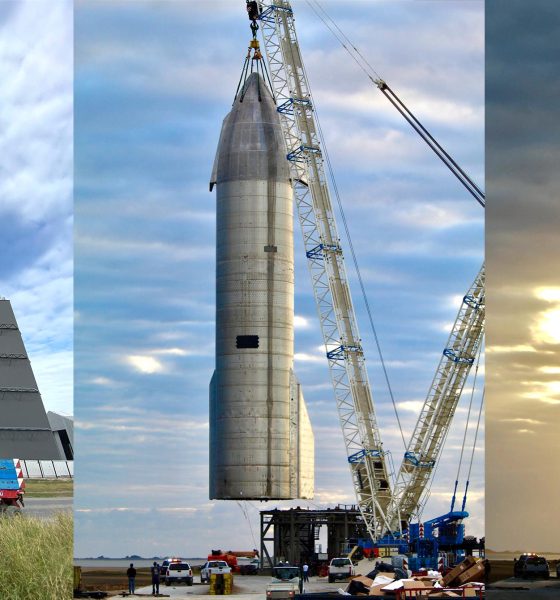
News
SpaceX moves next high-altitude Starship to launch pad after fixing fall damage
Update: Right on schedule, SpaceX rolled Starship serial number 9 (SN9) out of its ‘high bay’ assembly roost and transported the 50-meter-tall (~165 ft) stainless steel rocket to a launch pad about a mile down the road.
Wasting no time at all after having preemptively delivered a large crane from factory to pad the day prior, SpaceX began the process of lifting and installing Starship SN9 on one of two simple launch mounts less than three hours after arrival and began securing the rocket to the stand less than an hour after that. As discussed below, it’s nothing short of spectacular (and possibly unprecedented) that Starship SN9 was a victim of a workstand collapse, suffered some damage as a result, had that damage repaired or parts replaced, and was ready to roll to the launch pad to start pre-launch testing within a span of eleven days.
Additionally, SN9’s arrival means that SpaceX has now delivered a second complete Starship less than two weeks after Starship SN8 became the first full-size prototype to launch to high altitude atop multiple Raptor engines and skydive back to Earth. With the landing pad yet to be fully cleared after that launch debut, the crash-landed wreckage of SN8’s nose is even visible behind Starship SN9 in unofficial coverage of the new rocket’s pad transport and launch mount installation. As of December 22nd, SpaceX has one more road closure scheduled on Dec 23, followed by a trio from 8 am to 5 pm CST (UTC-6) from Dec 28-30. Stay tuned for updates as SpaceX prepares the second full-size Starship ever for tank proof and static fire testing!
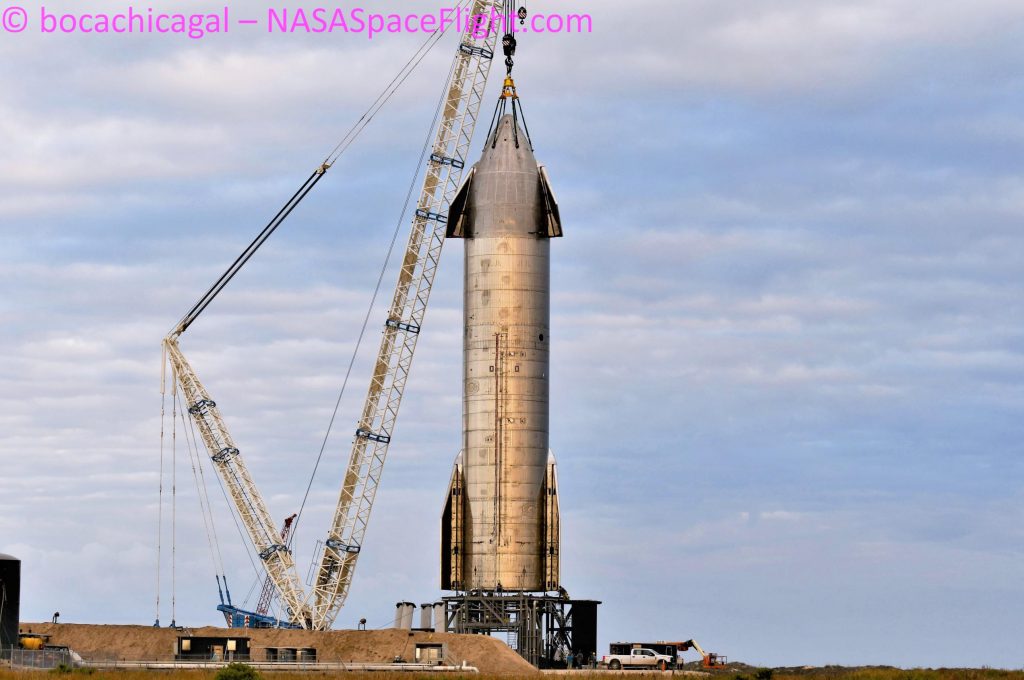
A handful of days after a workstand collapse threatened to end SpaceX’s next high-altitude Starship before it could leave the cradle, the rocket appears to have shrugged off whatever damage was caused with ease.
On the morning of December 11th and less than 24 hours after SpaceX investors and VIPs like COO Gwynne Shotwell and CEO Elon Musk were standing almost underneath the rocket, an unknown issue cause Starship SN9’s workstand to partially collapse. Seemingly through sheer luck, the part of the circular stand that collapsed was towards the corner of the ‘high bay’ building housing SN9, causing the rocket to tip around five degrees before colliding with the wall’s steel frame.
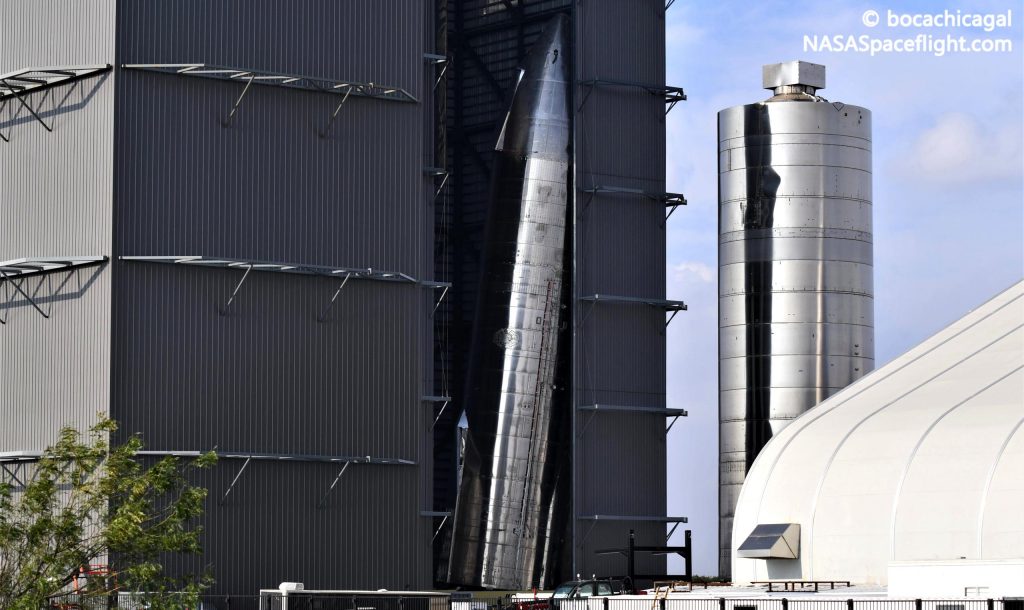
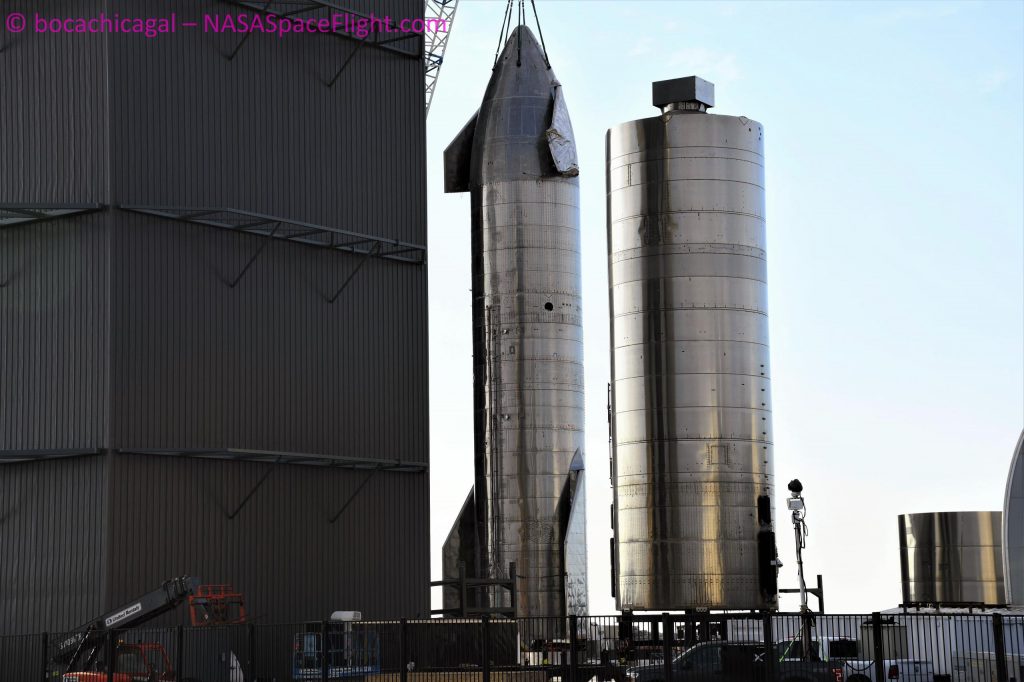
Again, by some stroke of luck, the same angle of Starship SN9’s fall that prevented the rocket from tipping over onto Super Heavy’s in-work tank section (with workers possibly inside) seemingly allowed its flaps to absorb the bulk of that impact. One of two pairs used to keep the ship steady during a skydiver-like freefall maneuver, SN9’s forward and aft starboard flaps suffered obvious damage, perhaps unintentionally functioning like the crumple zones designed to protect passengers during car crashes.
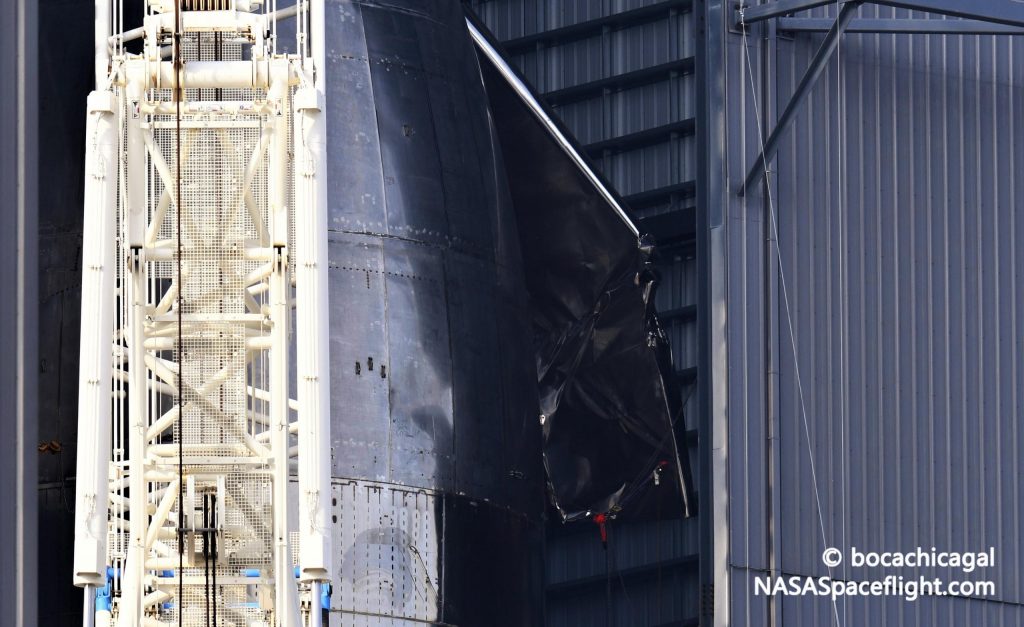
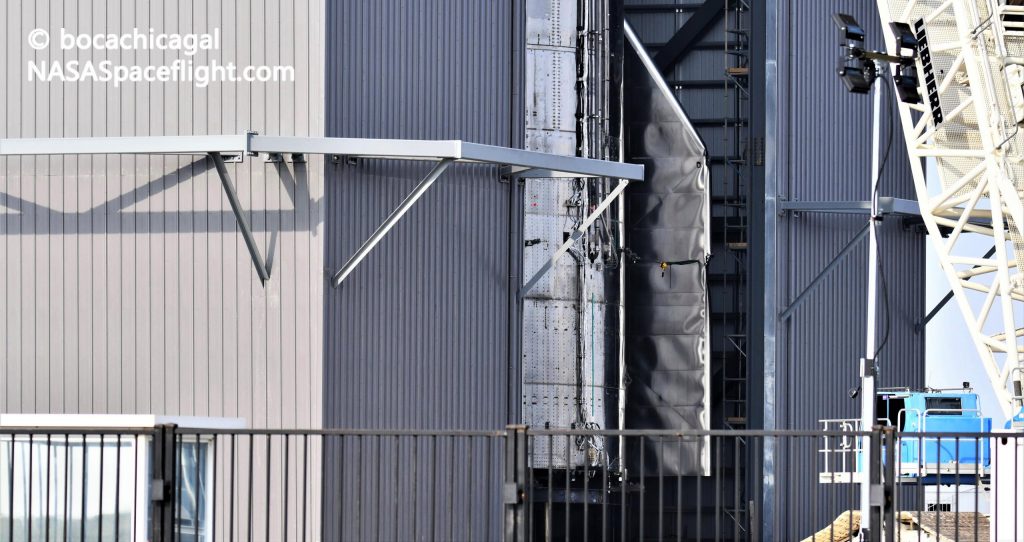
Aside from one or two subtle dents caused by the thoroughly off-axis stresses, the rest of the fully-assembled vehicle remained visibly untouched, though it was a near-complete unknown if Starship was capable of surviving such an ordeal. For 99% of the world’s rockets, almost all of which are either built out of aluminum or carbon fiber, tipping from a vertical position into a steel wall at anything less than a snail’s pace would likely be the end of any normal propellant tank – probably up to and including even SpaceX’s own reusable Falcon boosters. At a minimum, extensive repairs would be required.
On December 20th, nine days after the incident and six days after a crane lifted SN9 back into a stable position, SpaceX quietly replaced the Starship’s crumpled forward flap after having removed both damaged flaps in the days prior. The installation of that replacement flap – possibly taken from Starship SN10’s nose – all but confirmed a best-case scenario, as it would be hard to remove the damaged hardware and install a new flap so quickly if the underlying hinge and mounting mechanisms had been damaged in the fall. If only the aft – but not forward – flap mechanism was somehow damaged, it would also make little sense to install a new forward flap.
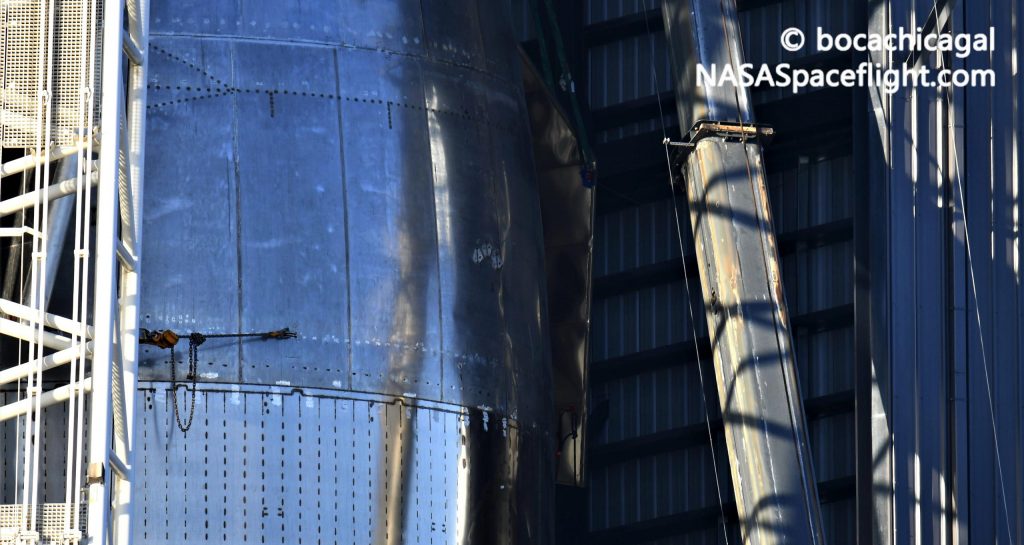
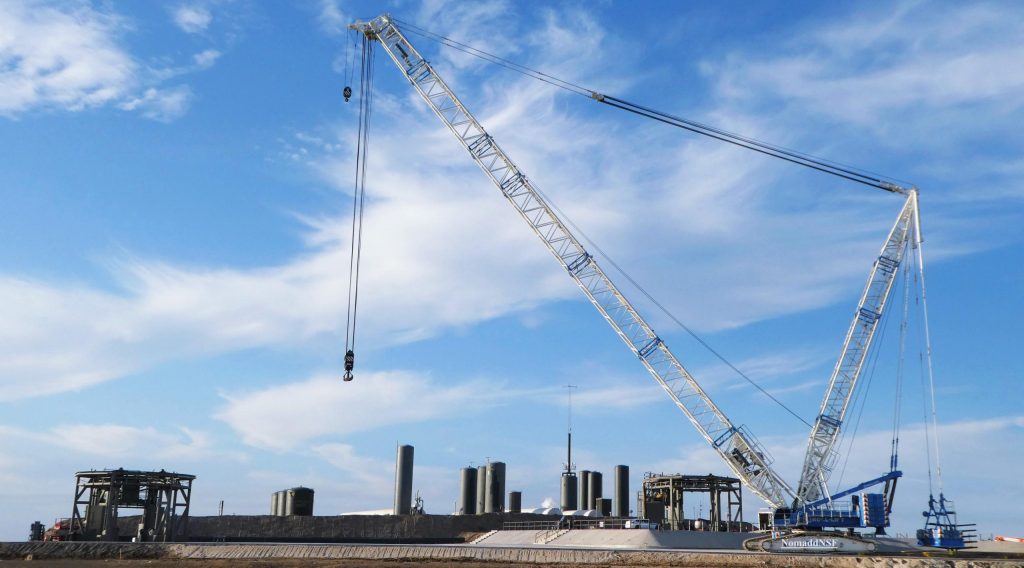
Meanwhile, in another kind of encouraging sign, SpaceX moved the crane needed to lift Starships onto the launch mount from the build site to the launch pad on December 21st – right on schedule. It’s extremely unlikely that SpaceX would complete that move unless it was confident that a Starship prototype would be ready to roll to the launch pad, further implying that Starship SN9 really has shrugged off its workplace accident after less than two weeks of delays. Stay tuned for updates – road closures that could be used to transport SN9 are still in place from around 8 am to 5 pm CST on December 22nd and 23rd.

Cybertruck
Tesla Cybertruck undergoes interior mod that many owners wanted
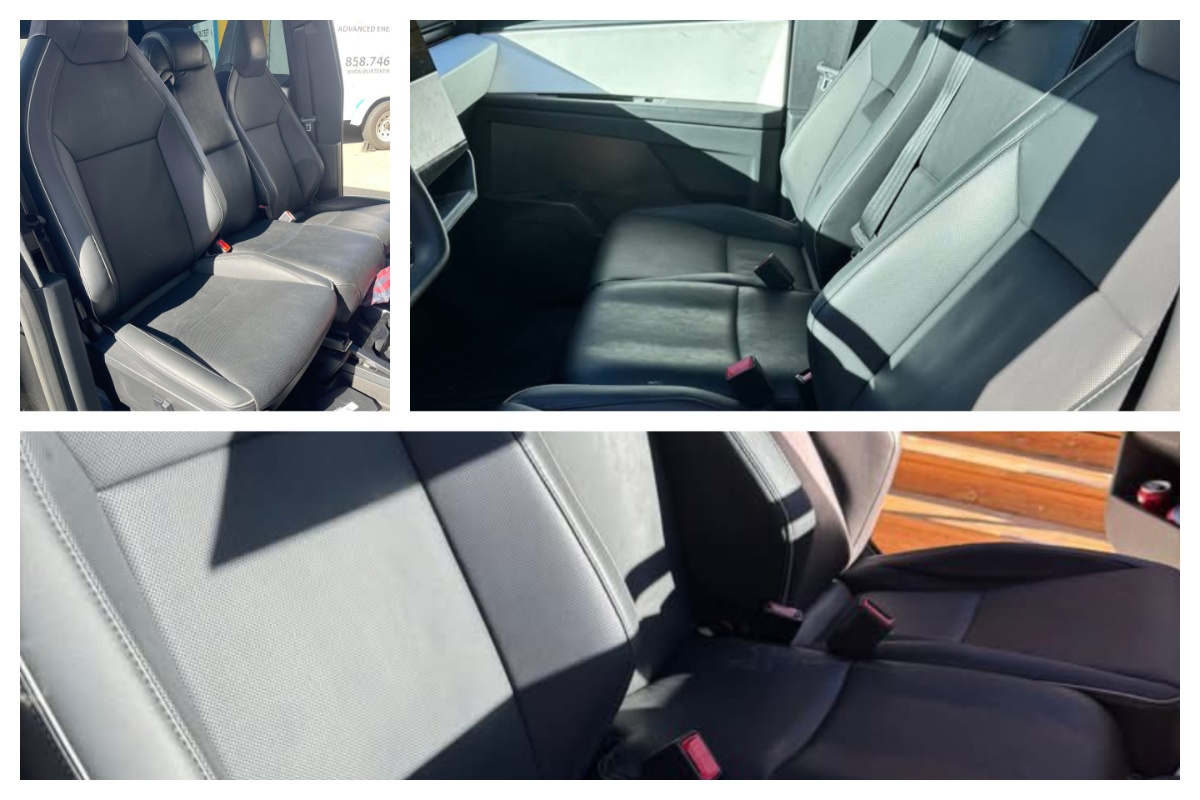
Tesla Cybertruck is significantly different from traditional pickups on the market in a lot of ways. However, one feature that was recently modified with its interior was a highly requested characteristic that is present in other trucks, but was void from Cybertruck.
Tesla went with a five-seat configuration with Cybertruck: two in the front and three in the back. The spacious interior is matched with plenty of storage, especially up front, as a pass-through, center console, and other storage options, but some Tesla fans wanted something different: bench seating.
Bench seating is popular in many full-size pickups and allows three passengers to sit up front. The middle seat is usually accompanied by a fold-down storage unit with cupholders.
Tesla decided to opt for no bench seating up front, despite the fact that it equipped bench seating in the unveiling in 2019. Interior photos from the unveiling event from nearly six-and-a-half years ago show Tesla had originally planned to have a six-seat configuration.
This was adjusted after the company refined the design:
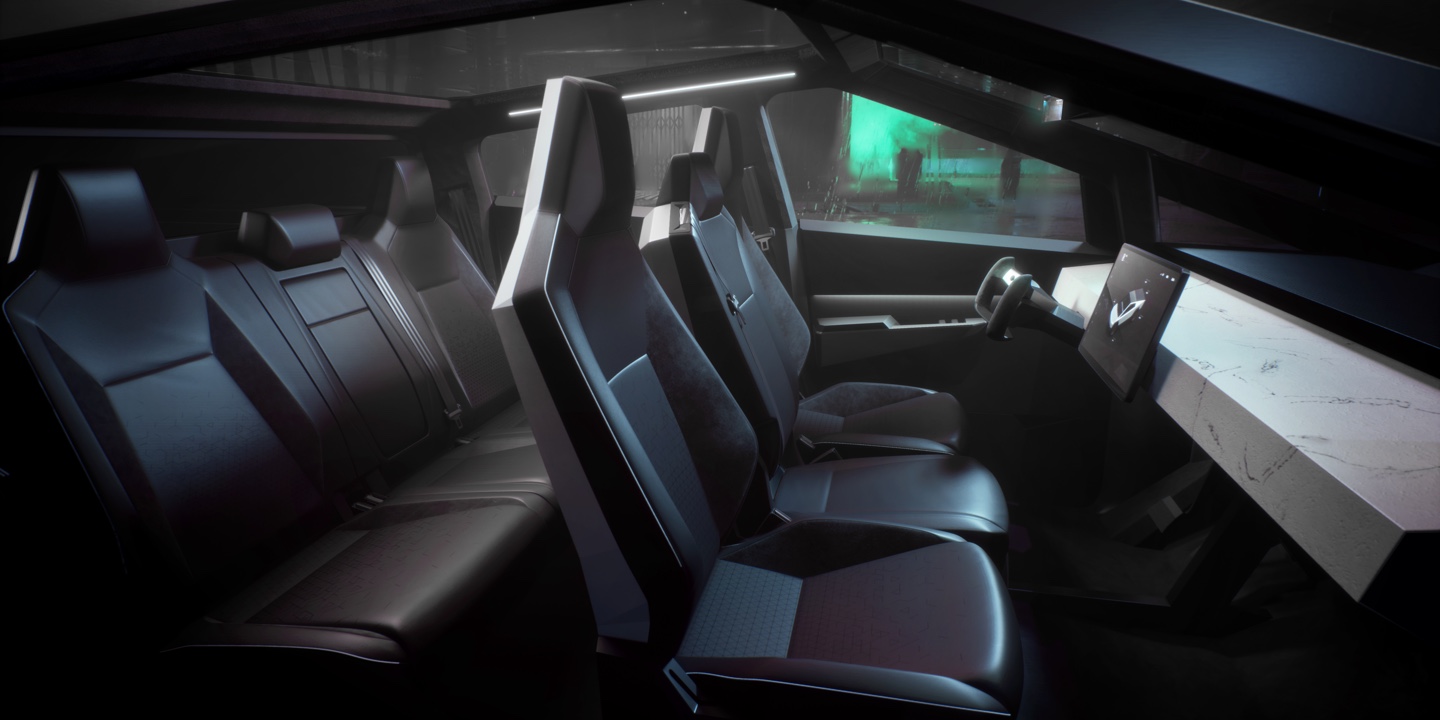
(Tesla Cybertruck interior configuration in 2019)
Despite Tesla abandoning this design, it does not mean owners were willing to accept it. One owner decided to modify their Tesla Cybertruck interior to equip that third seat between the driver’s and passenger’s thrones.
The fit is snug, and while it looks great, it is important to remember that this does not abide byregulations, as it would require an airbag to be technically legal. Please do not do this at home with your own Cybertruck:
- Credit: @blueskykites
- Credit: @blueskykites
- Credit: @blueskykites
The Cybertruck is a popular vehicle in terms of publicity, but its sales have been underwhelming since first delivered to customers back in 2023. It’s hard to believe it’s been out for two-and-a-half years, but despite this, Tesla has not been able to come through on its extensive order sheet.
This is mostly due to price, as Cybertruck was simply not as affordable as Tesla originally planned. Its three configurations were initially priced at $39,990, $49,990, and $69,990. At release, Cybertruck was priced above $100,000.
This priced out many of those who had placed orders, which is the main reason Cybertruck has not lived up to its expectations in terms of sales. The adjustments to the specific features, like the removal of the bench seat, likely did not impact sales as much as pricing did.
This modification shows some creativity by Tesla owners, but also shows that the Cybertruck could always be the subject of a potential refresh to include some of these features. Tesla routinely adjusts its vehicle designs every few years, so maybe the Cybertruck could get something like this if it chooses to refresh its all-electric pickup.
Elon Musk
Tesla CEO Elon Musk drops massive bomb about Cybercab
“And there is so much to this car that is not obvious on the surface,” Musk said.

Tesla CEO Elon Musk dropped a massive bomb about the Cybercab, which is the company’s fully autonomous ride-hailing vehicle that will enter production later this year.
The Cybercab was unveiled back in October 2024 at the company’s “We, Robot” event in Los Angeles, and is among the major catalysts for the company’s growth in the coming years. It is expected to push Tesla into a major growth phase, especially as the automaker is transitioning into more of an AI and Robotics company than anything else.
The Cybercab will enable completely autonomous ride-hailing for Tesla, and although its other vehicles will also be capable of this technology, the Cybercab is slightly different. It will have no steering wheel or pedals, and will allow two occupants to travel from Point A to Point B with zero responsibilities within the car.
Tesla shares epic 2025 recap video, confirms start of Cybercab production
Details on the Cybercab are pretty face value at this point: we know Tesla is enabling 1-2 passengers to ride in it at a time, and this strategy was based on statistics that show most ride-hailing trips have no more than two occupants. It will also have in-vehicle entertainment options accessible from the center touchscreen.
It will also have wireless charging capabilities, which were displayed at “We, Robot,” and there could be more features that will be highly beneficial to riders, offering a full-fledged autonomous experience.
Musk dropped a big hint that there is much more to the Cybercab than what we know, as a post on X said that “there is so much to this car that is not obvious on the surface.”
And there is so much to this car that is not obvious on the surface
— Elon Musk (@elonmusk) January 2, 2026
As the Cybercab is expected to enter production later this year, Tesla is surely going to include a handful of things they have not yet revealed to the public.
Musk seems to be indicating that some of the features will make it even more groundbreaking, and the idea is to enable a truly autonomous experience from start to finish for riders. Everything from climate control to emergency systems, and more, should be included with the car.
It seems more likely than not that Tesla will make the Cybercab its smartest vehicle so far, as if its current lineup is not already extremely intelligent, user-friendly, and intuitive.
Investor's Corner
Tesla Q4 delivery numbers are better than they initially look: analyst
The Deepwater Asset Management Managing Partner shared his thoughts in a post on his website.

Longtime Tesla analyst and Deepwater Asset Management Managing Partner Gene Munster has shared his insights on Tesla’s Q4 2025 deliveries. As per the analyst, Tesla’s numbers are actually better than they first appear.
Munster shared his thoughts in a post on his website.
Normalized December Deliveries
Munster noted that Tesla delivered 418k vehicles in the fourth quarter of 2025, slightly below Street expectations of 420k but above the whisper number of 415k. Tesla’s reported 16% year-over-year decline, compared to +7% in September, is largely distorted by the timing of the tax credit expiration, which pulled forward demand.
“Taking a step back, we believe September deliveries pulled forward approximately 55k units that would have otherwise occurred in December or March. For simplicity, we assume the entire pull-forward impacted the December quarter. Under this assumption, September growth would have been down ~5% absent the 55k pull-forward, a Deepwater estimate tied to the credit’s expiration.
“For December deliveries to have declined ~5% year over year would imply total deliveries of roughly 470k. Subtracting the 55k units pulled into September results in an implied December delivery figure of approximately 415k. The reported 418k suggests that, when normalizing for the tax credit timing, quarter-over-quarter growth has been consistently down ~5%. Importantly, this ~5% decline represents an improvement from the ~13% declines seen in both the March and June 2025 quarters.“
Tesla’s United States market share
Munster also estimated that Q4 as a whole might very well show a notable improvement in Tesla’s market share in the United States.
“Over the past couple of years, based on data from Cox Automotive, Tesla has been losing U.S. EV market share, declining to just under 50%. Based on data for October and November, Cox estimates that total U.S. EV sales were down approximately 35%, compared to Tesla’s just reported down 16% for the full quarter. For the first two months of the quarter, Cox reported Tesla market share of roughly a 65% share, up from under 50% in the September quarter.
“While this data excludes December, the quarter as a whole is likely to show a material improvement in Tesla’s U.S. EV market share.“

